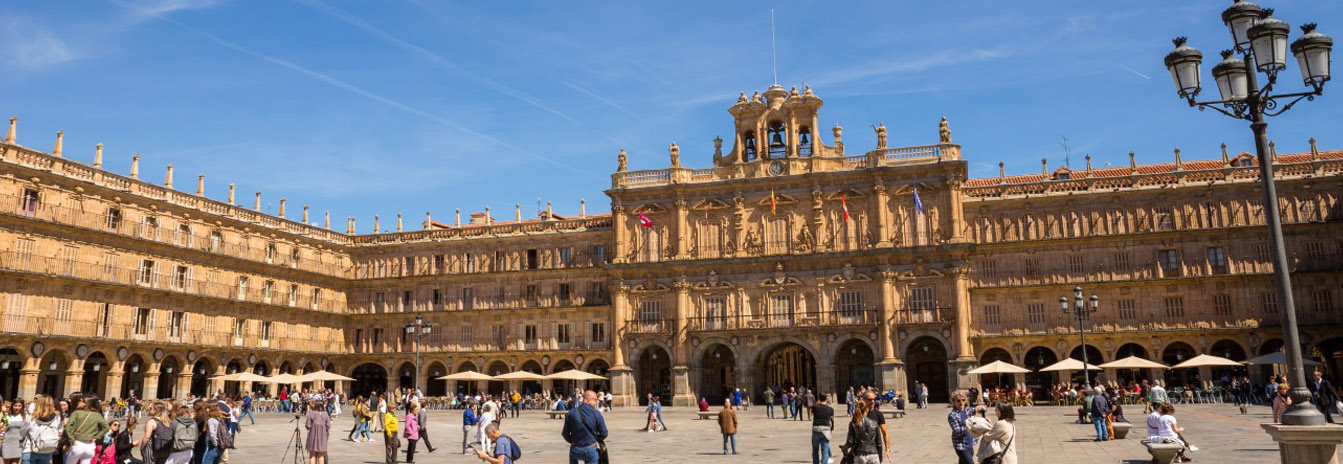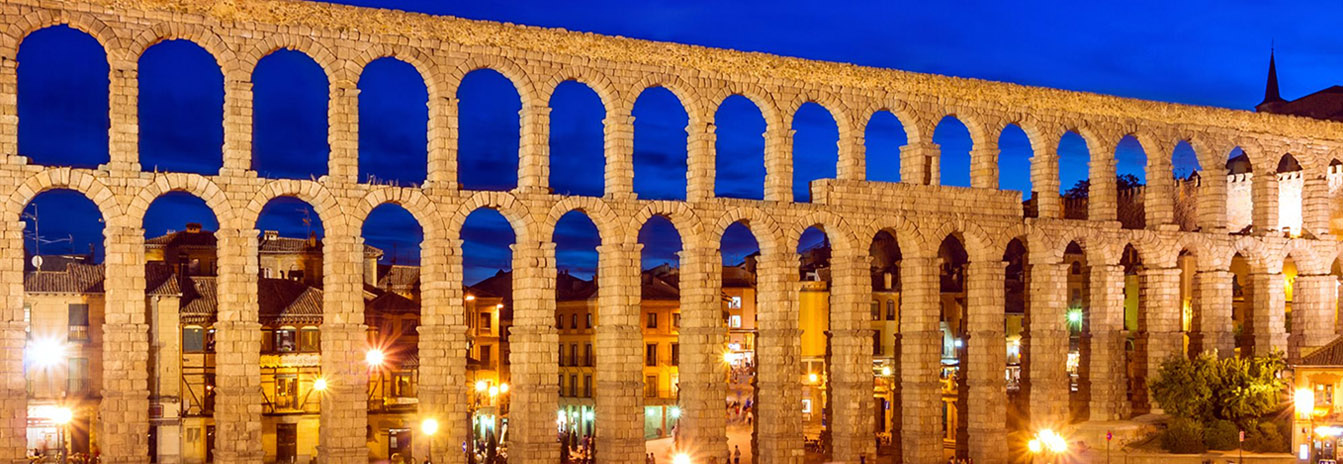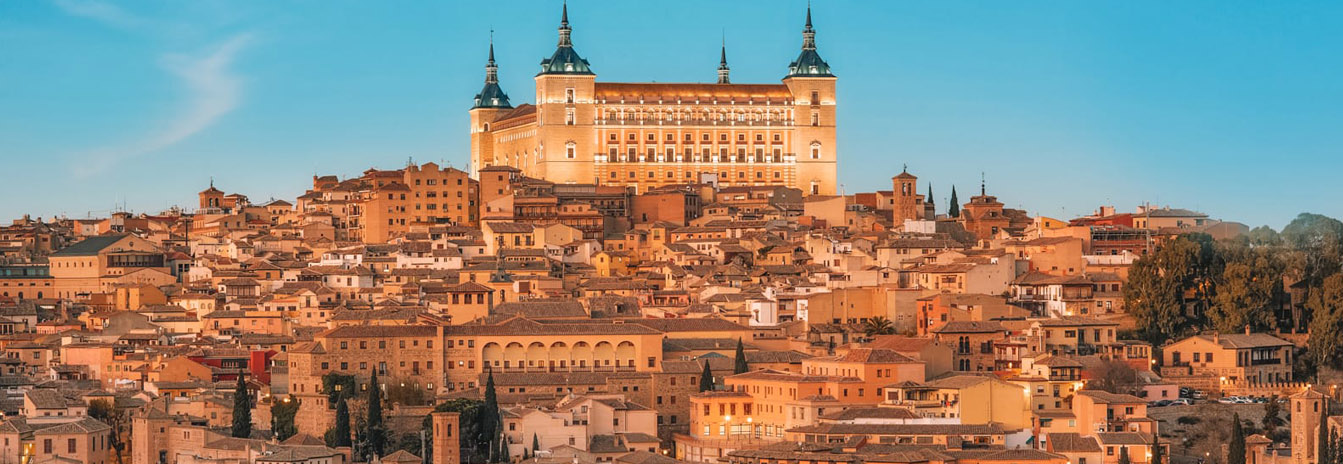When Alfonso VI conquered Toledo in 1085, the Christians were able to begin to organize what would be at the end of the Middle Ages the heart of a vast empire. The entire area between the Duero and Tajo Rivers would be filled with cities inhabited by proud nobles, an authoritative church and bellicose kings ever more powerful. We will see their origins, their splendor and their projection towards America. These and their excellent state of preservation allow us to find five historical districts along this route that have earned the designation of World Heritage sites.
Day 1 Arrival in Madrid and departure to Toledo.
Overnight in Toledo.
Day 2 Toledo was already the capital of Spain under the Visigoths and would become so again when the Christians reclaimed the city. It is the enclave that best expresses the religious avatars of the Middle Ages. From the Visigoth period which emanated the idea of a united, independent and Catholic Iberian Peninsula, to the medieval cohabitation of three religions -the Cristo de la Luz Mosque, the Tránsito and Santa María la Blanca Synagogues, and the Cathedral- we arrive at the controversial Spanish Renaissance -the Santa Cruz hospital and El Greco-. Despite the overlapping of cultures, wandering the narrow streets of Toledo continues to evoke the Mediterranean and Semitic origin of so many Spanish cities.
Overnight in Toledo Possibility of visiting a local producer for a manchego cheese tasting.
Day 3 Continuing along the Tajo River we will arrive at the Extremadura mountain range in which the Guadalupe Sanctuary can be found. The collection of convents with a fortress-like appearance is another key expression of Mudéjar art, the cloister being of particular interest. Its appeal has allowed it to gather works of art through the 18th century; indeed here we can find one of the best pictorial collections of Zurbarán. Also of interest are the narrow streets, the San Juan Hospital and the adjacent Colegio de Gramática, nowadays a luxurious Parador. If the name Guadalupe is reminiscent of a Hispanic-American culture, it would be the neighboring Trujillo that best represents the discovery of the Americas. Surrounding the 10th - 11th century Arab castle are numerous bastioned estates whose names bring to mind Pizarro, Orellano and Zúñiga.
Overnight in Cáceres.
Day 4 The number of estates and palaces huddled around the Plaza Mayor of Cáceres and its adjoining streets is so abundant that the visitor feels transported to times gone past. Located within a walled Almohad Arab district are the Golfines, Toledo Moctezuma, Godoy Carvajal and other palaces. Along the heavily traveled Roman era Silver Route we will arrive at the walled city of Plasencia, with its narrow streets winding around the lively Plaza Mayor. Notable palaces include the Mirabel and the Carvajal. The most interesting of all are the two Cathedrals, hidden within each other. Continuing along the Silver Route we will pass by the Sistema Central mountain range of Castile and León. Overnight in Salamanca.
Day 5 We can enjoy a morning stroll and enter Salamanca from the south, crossing the well preserved Roman Bridge. Salamanca is now, and has always been, more than anything a university city. The historical university buildings that have been preserved since medieval and Renaissance times, are unique and many of them are open to tourists. The homogenous mix of students and visitors beckons us to stroll through its lively streets and to indulge in the festive atmosphere. Notable monuments include the Plaza Mayor, the two Cathedrals -from Romanesque to Baroque- the House of Shells, the San Esteban Convent, and the interesting Art Nouveau and Art Déco Museum situated in the modernist Casa Lis.
Overnight in Salamanca.
Day 6 The end of our journey takes us to two monumental cities, both declared World Heritage sites. Ávila, birthplace to the famous Spanish mystics Santa Teresa de Jesús and Saint John of the Cross, welcomes us with its impressive walls, its Cathedral, the San Vincent Basilica, palaces and family estates -the Veladas, Valderrábanos, Núñez Velas and Torreón de los Guzmanes-, as well as the Monastery of the Incarnation. In the afternoon we will visit Segovia with its spectacular Roman Aqueduct, a jewel of Roman engineering built in the 1st century. As we walk through the Jewish Quarter, we will have the opportunity to behold the Casa de los Picos, the Alhóndiga and the Torreón de los Lozoya fortress. We will visit the Gothic Cathedral known as the “Lady of Cathedrals” as well as the defensive Alcázar fortress.
Overnight in Segovia Possibility of organizing a special farewell dinner.
Day 7 Transfer to the Madrid Airport.
WORLD HERITAGE SITES: FROM CASTILE TO EXTREMADURA 7 DAYS:
- Day 1 MADRID – TOLEDO
- Day 2 TOLEDO
- Day 3 TOLEDO – GUADALUPE – TRUJILLO – CÁCERES
- Day 4 CÁCERES – PLASENCIA – SALAMANCA
- Day 5 SALAMANCA
- Day 6 SALAMANCA – ÁVILA – SEGOVIA
- Day 7 SEGOVIA – MADRID
 |
 |
 |





